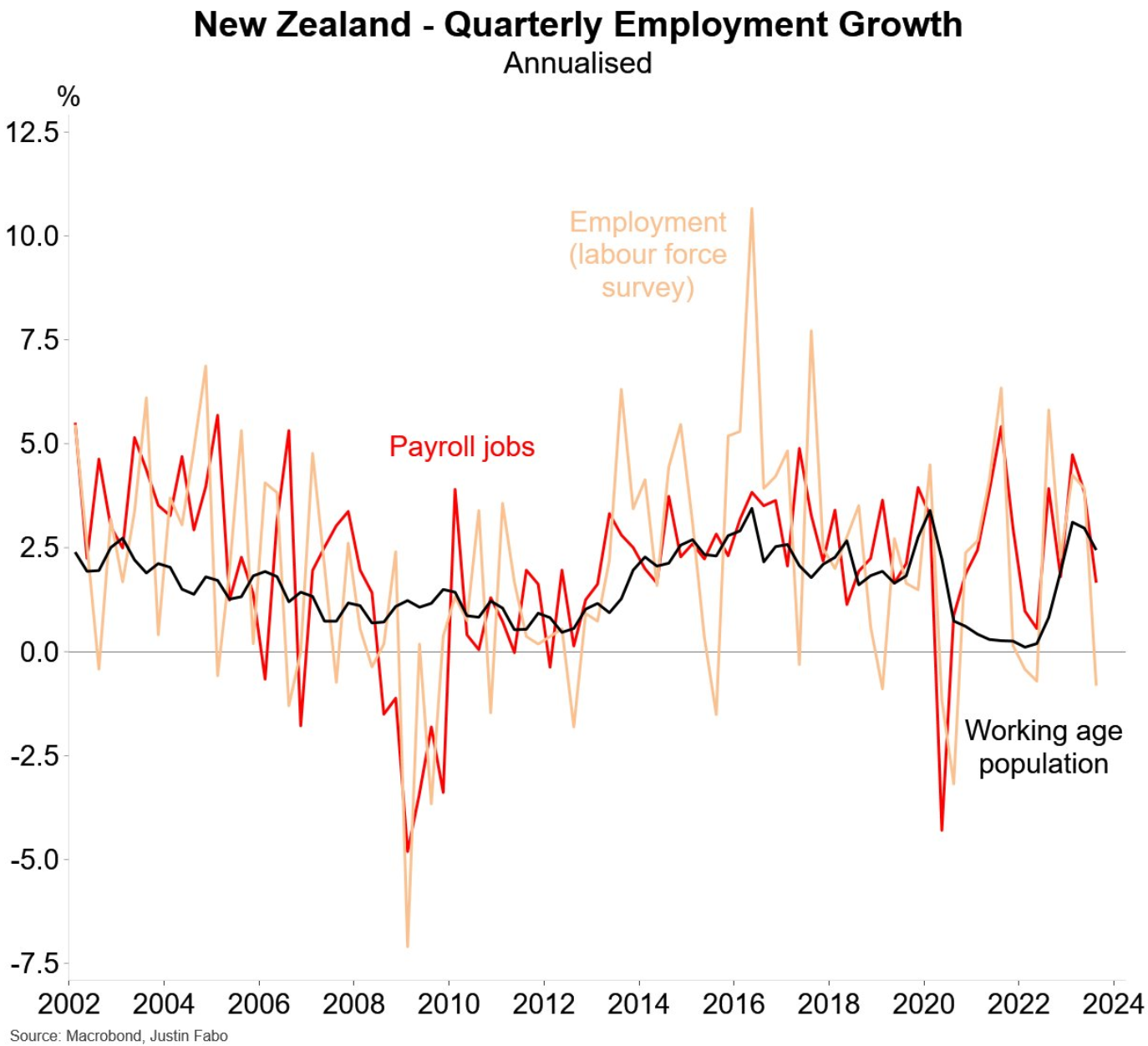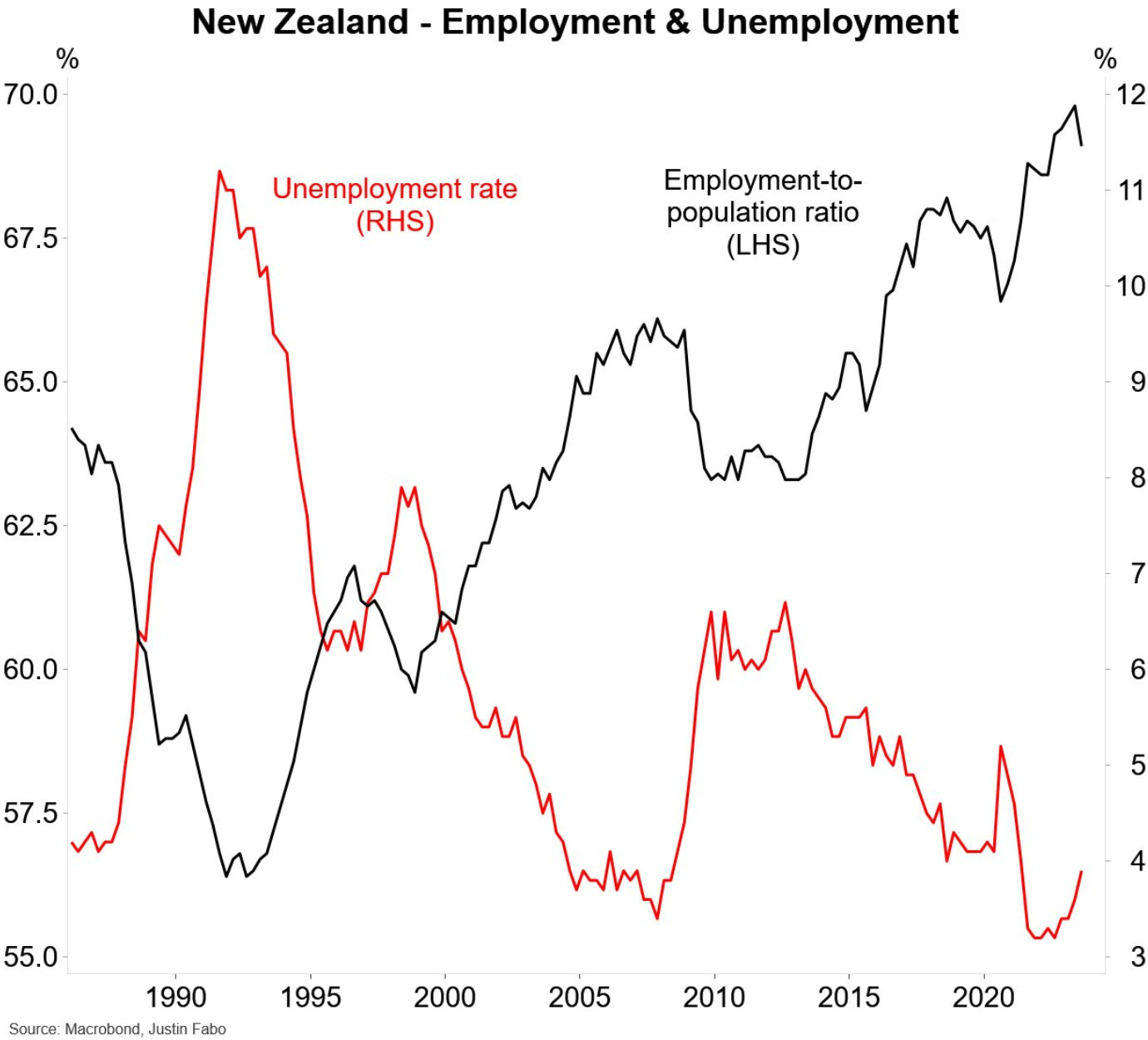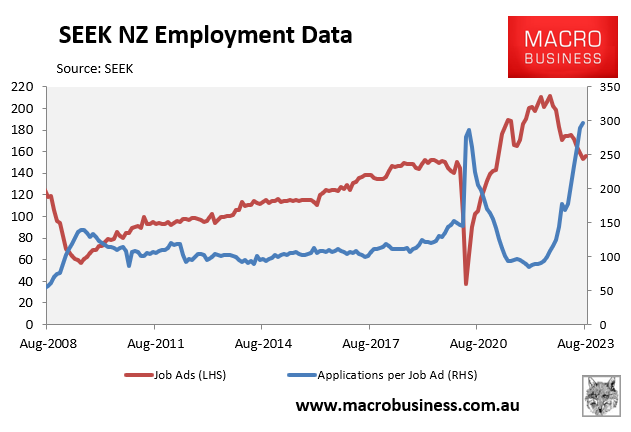The record (5.25%) of interest rate increases from the Reserve Bank of New Zealand is beginning to weigh heavily on the labour market.
On Wednesday, Statistics New Zealand reported that the nation’s unemployment rate jumped to 3.9% from 3.6% in the September quarter as more people sought work than was available amid the slowing economy.
The underutilisation rate, which includes people who have a job but want to work more hours, jumped from 9.9% to 10.4%.
Commenting on the result, Victoria Treliving from Statistics New Zealand noted:
“Increases in unemployment and underutilisation over the year indicate increasing spare capacity in the labour market following competitive labour market conditions in 2021 and 2022”.
The below charts from Justin Fabo at Macquarie Group tell the tale.
Quarterly employment growth has turned negative:

Unemployment has risen from its low and the employment-to-population ratio has fallen:

Meanwhile, wage growth has also likely peaked:

The situation will only get worse from here, too, given net overseas migration and ergo labour supply are now rising at a record pace amid the slowing economy:

This has driven the number of applicants per job ad well above pre-pandemic levels, according to SEEK:

To add further insult to injury, Westpac warns that the “historic population boost” could force the Reserve Bank to hike interest rates further next year:
“We still see some reasonably strong domestic inflation pressures out there – most notably from the historic population boost coming from net migration which is yet to show any signs of easing”.
“We think that the summer period will show the strengthening in the housing market that the RBNZ indicated it was still not sure about in its October Monetary Policy Review”.
“Those trends will add to medium-term inflation pressures and likely eventually force the RBNZ’s hand in 2024”.
Surging labour supply, higher interest rates, and a slowing economy are a recipe for disaster for workers who face the prospect of rising unemployment and falling real wages.

